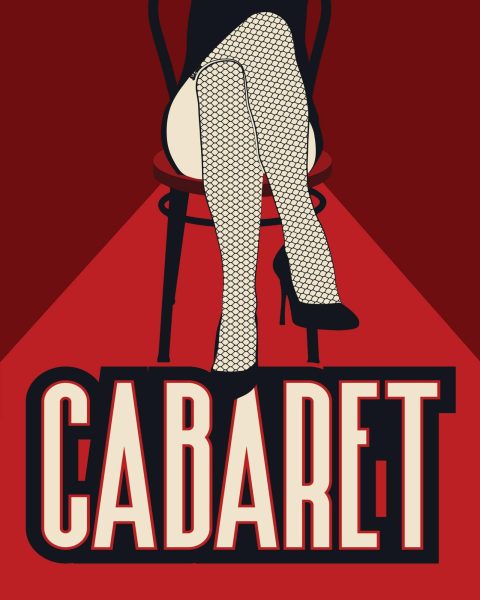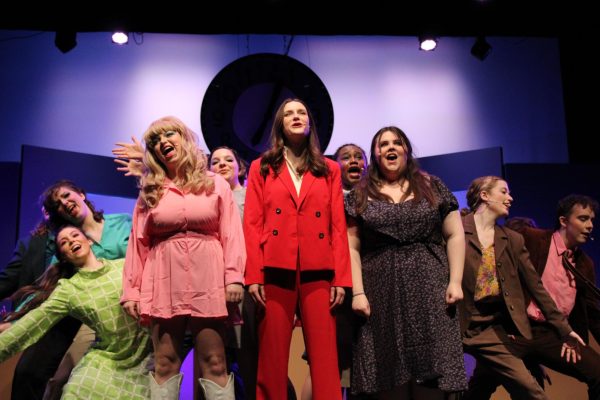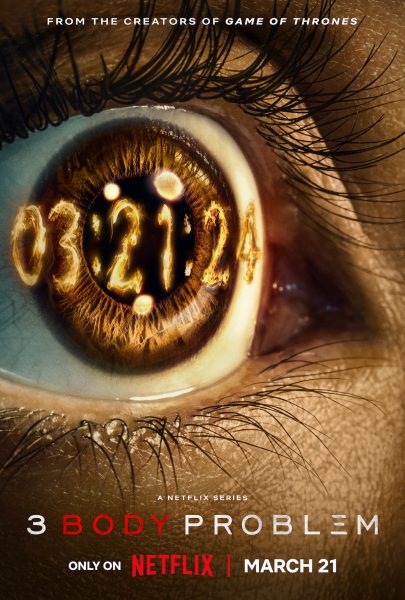The Flick illustrates “messed up people just trying to get by”
March 24, 2017
Movies hold incredible power. Think of some of the greats: “The Godfather,” “Pulp Fiction,” “Jurassic Park” and even modern classics like “Argo” and “Moonlight.” Cinematic flicks have the potential to captivate the mind, and amaze with intense effects and stories. However, it’s not very often that we consider what happens in the theaters between the shows. Nothing in reality could possibly compare to the wonder that happens on screen, and that’s the entire appeal of Dobama Theater’s production of “The Flick,” by acclaimed playwright Annie Baker.
The play follows a crew of movie theater employees. Sam and Avery (played by Christopher Bohan and Gordon Hinchen respectively) are the theater cleaners, while Rose (Paige Klopfenstein) runs the 35-millimeter film projector. You may notice that these characters are overwhelmingly normal, the antithesis of a movie hero or heroine. Instead of fighting to save the world, they’re all struggling to stay afloat. We see the characters cleaning up after other people’s messes while simultaneously letting their own lives slowly slip down the drain. However, just because these characters are seemingly normal doesn’t mean that they are flat by any means. Throughout the show, we learn about the troubles plaguing each of these characters, from Sam’s issues with his family, to Rose’s history of turbulent relationships, to Avery’s emotional and mental problems.
Dobama Theater’s production creates a world where there is a clear distinction between the world of the screen and the world of the workers, through the show’s design and the script’s presentation.
My personal favorite portions of the show came from the lighting and sound design, the former done by Marcus Dana and the latter by Cyrus O. Taylor. The lights and sound often work in tandem in this show, to the point where I feel it’s better to review them as one entity. As soon as the entire audience files into the theater and sits down, the theater practically becomes a movie theater. The lights dim, and instead of a regular announcement to silence phones, we get the audio of a pre-show announcement that would sound completely in place in a modern movie theater. Immediately following this, we hear a click, and the sounds of a 35-millimeter projector slowly revving up, and cutting through the pitch black, we see a beam of light shining over one section of the audience, all the while hearing Bernard Hermann’s “The Naked and the Dead,” from the soundtrack of “Citizen Kane.” This introduction to the show immediately gives a strong feeling of time and place, and shows a technique that will be repeated throughout the show during scene transitions. This is in stark contrast with the lights and sounds that surround the actors. Rather than anything too interesting or cinematic, a regular wash of light is put over the actors, and almost no sound cues are used, which is reminiscent of reality. The few times that the lights change on the actors are near the end of each act, when important events are happening.
The props and set design, by Christine Woods and Jill Davis, are also closely intertwined, and work well to reflect the place. Davis does an incredible job of recreating an older-style of movie theater, even going so far as to use almost identical seats to those in the theater’s audience. In addition, the props, while not integral to the plot of the show, provide much of the activity and dialogue for Sam and Avery. Ranging from half-empty boxes of popcorn to piles of candy, each prop needs to be meticulously placed in certain areas for the actors to easily find them.
The actors in this show are all very strong and give great performances. It’s difficult for me to choose one to discuss, as they all portray their characters incredibly well, so I will go with the show’s main protagonist, Avery, the newbie employee at the theater portrayed by Hinchen. Avery is a character with many issues, such as anxiety and family issues, and Hinchen portrays him very realistically, and manages to give an awe-inspiring performance.
Some of the major issues of this show come from the script and the concept itself, unfortunately. The setting of a movie theater leads to an interesting concept, but often times it feels like this show is not meant for a three-sided theater such as Dobama Theater. Often times, some of the magic is lost to the audience members on either side of the stage, such as seeing what’s going on in the theater’s booth, which is mostly visible to the front audience. In addition, one of Annie Baker’s signatures include very rigid places for pauses in the dialogue. While this creates a unique style, it also may create some confusion for those unfamiliar with her works. Lastly, the show is longer than most modern shows, which can seem daunting at first, but for those not scared away, the show draws you into the point where it feels much shorter.
Overall, Dobama Theater’s production of “The Flick,” directed by Nathan Motta, creates a beautiful, down to earth atmosphere to show us the lives of a few screwed-up people just trying to get by. Go and see it while you still can.
4/5 stars




















